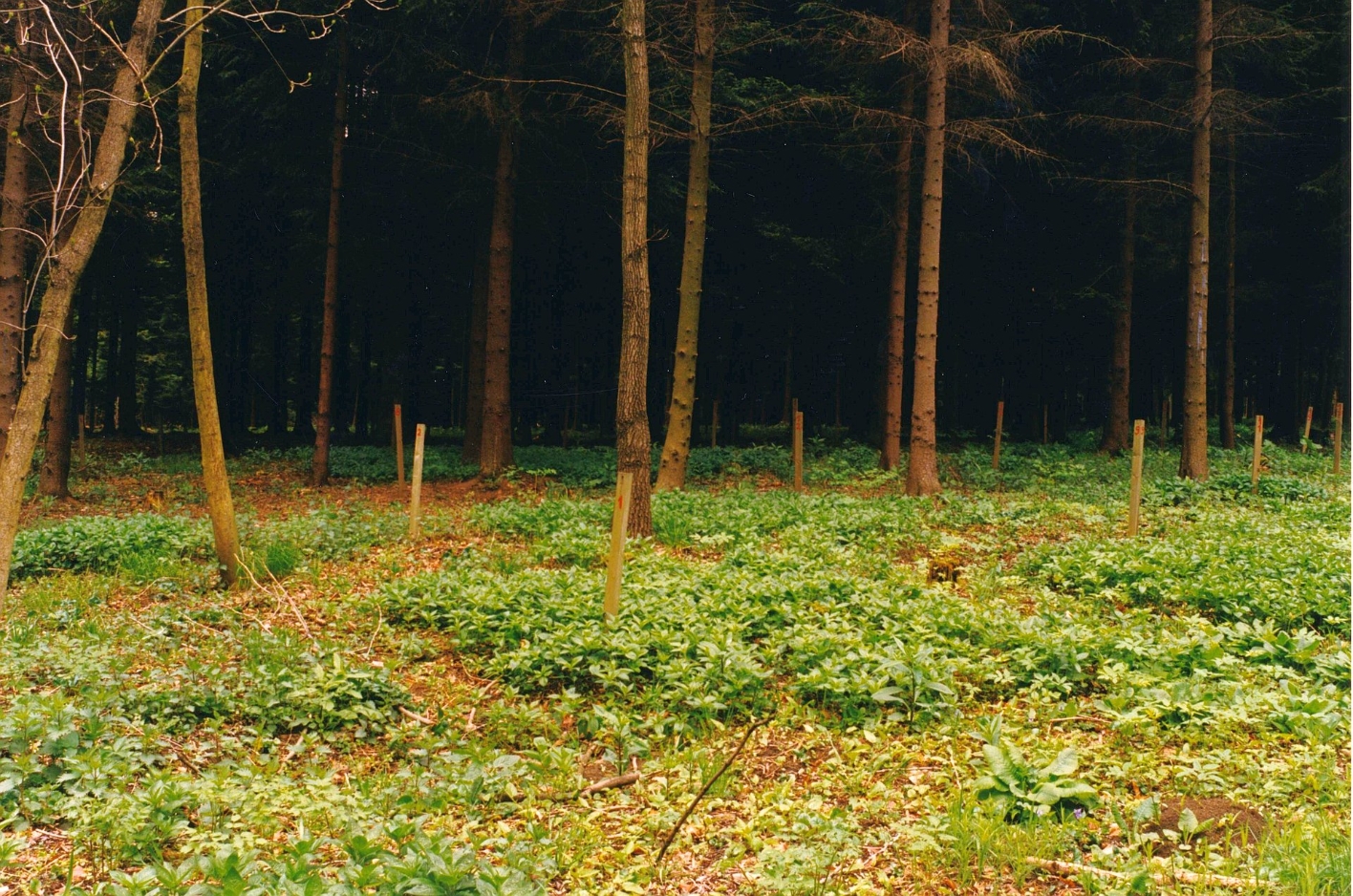

Between 1945 and 1950, 7,113 people died in Buchenwald, more than three-fourths of them during the hunger-winter of 1946/47. Initially they were buried individually near the infirmary. Later these graves were moved. A burial commando buried the dead in two areas to the north of the camp. The dead were buried anonymously; relatives were not notified. Planted trees disguised the graves.
Only after 1990 was it possible to commemorate the deceased in dignified manner. In 1990, the memorial first installed a wooden cross, onto which family members attached search inquiries and private obituaries for their loved ones. Since the 1990s, sources from the Soviet camp registry were analysed, and it became possible to identify the date of individual deaths. Since the 1990s, a dedicated memorial area contains commemorative crosses and stones, with which families invoke the memories of the deceased. In the forest, steles mark the multiple burial places. Annual commemorative events take place in a designated area of mourning, which was redesigned in 2007.

